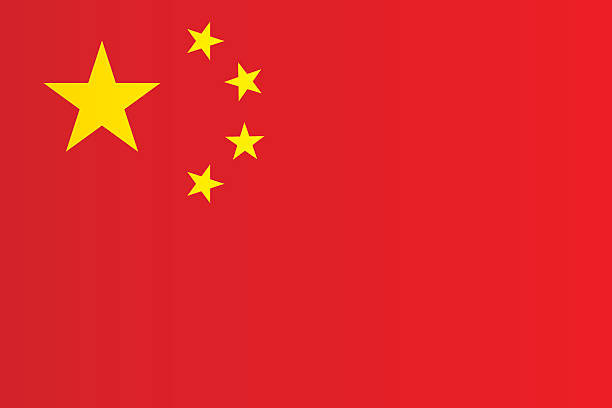
In his annual report to China’s legislature, Premier Li Qiang vowed a “new leap forward” by supporting developing sectors and industries, including electric vehicles, new materials, commercial spaceflight, quantum technology, and life sciences. However, this new leap forward does not alleviate China's current economic difficulties.
The latest challenge is that Chinese money is pouring into funds invested in offshore assets, butting up against outbound investment limits. This complicates China’s efforts to revive domestic markets and stabilise the yuan. Retail money has rapidly moved into exchange-traded funds (ETFs) and mutual funds issued under the Qualified Domestic Institutional Investor (QDII) programme, one of the few channels for Chinese money to be invested abroad.
The investment research firm Morningstar states that 38 QDII funds have been launched this year. The indications are that Chinese investors seek access to US, Japanese, and emerging markets. There is little doubt that current Chinese economic recovery trends have dented investor confidence.
Low confidence in the markets is leading to this rush to invest offshore, evident from the sales of funds issued under the QDII programme. This key outbound investment channel allows the Chinese to buy overseas securities.
Reuters reports that QDII fund units sold in January 2024 jumped 50% year-on-year to a record high, while those of domestic equity mutual funds dropped by 35%. Assets under management for QDII funds were up 19% year-on-year.
China's State Administration of Foreign Exchange sets the upper limit on outbound investment of the QDII scheme. Since July, no new quotas have been granted, leaving the cumulative approved quota at US$165.5 billion. In other words, this quota has almost been used up, and there is demand for more as domestic investors seek alternatives to falling stock and property values at home.
The QDII program, launched in 2006, remains a key outbound investment channel for mainland Chinese investors. The other option is the Qualified Domestic Limited Partnership (QDLP) programme.
These offshore investments have come against the backdrop of President Xi Jinping's coining of the term "new productive forces" during a trip to northeast China last September. Xi highlighted the need for a new model for economic development based on innovation in advanced sectors.
- The brains behind Matavire’s immortalisation
- Red Cross work remembered
- All set for inaugural job fair
- Community trailblazers: Dr Guramatunhu: A hard-driving achiever yearning for better Zim
Keep Reading
This new phrase has since been enshrined into Xi Jinping Thought.
The Global Times reports that Xi’s new thought has been at the “front and centre” of the Two Sessions held in March. The annual report of China's state planning agency, the National Development and Reform Commission, pledged support for industries including satellite internet applications, China's BeiDou Navigation Satellite System, and research into nuclear fusion.
Therefore, the target appears to be high-technology industries. This leaves the question of what China will do with its traditional industries.
While the slogan highlights prospects for future Chinese growth, it underplays the present economic difficulties, including local government indebtedness, weak consumer confidence, and an overhang of the property crisis. The question is how China will implement the new Xi vision.
In his work report, Li said China would issue one trillion yuan worth of special purpose bonds, equivalent to US$ 139 billion, in 2024 to fund strategic sectors.
The present scramble to invest in overseas funds under the QDII illustrates the pressure on China's capital account and currency and the challenges in rebuilding the confidence of domestic investors in the market. Chinese stocks are reaching a five-year nadir while yields on 30-year treasury bonds have plumbed to record lows.
The blue-chip CSI300 index has been among the world's worst-performing major indexes this year, down roughly 2%, after tumbling 22% in 2022. This year, the yuan is down more than 5% against the US dollar.
Experts observe that wealthy Chinese are diversifying asset allocation, and after two decades of high growth and returns, the Chinese economy faces an uncertain future, thereby slowing down. This is why a third of Chinese funds that invest in foreign securities under QDII have announced in stock exchange notices that they have suspended or capped sales to retail investors “to maintain stable operations and protect investors’ interests”.
Reuters reports that ChinaAMC has capped investors' daily subscription to its Huaxia Global Technology Pioneer Hybrid Securities Investment Fund, which lists US tech giants among its top holdings, at 2,000 yuan (US$ 277.84). Manulife Fund Management has set 300 yuan as the daily maximum purchase of its India Opportunity Stock Investment Fund.
Another QDII product sold in China, which is putting money into a Blackrock UK hedge fund, has seen a fivefold surge in fundraising this year, drawing nearly US$ 12 million against the US$ 2.1 million it raised in 2023! China Resources Trust said the product paused new subscriptions in March, which jointly launched the product with Blackrock.
Standard Chartered also recently stopped its Chinese clients from making new investments in QDII products for "commercial reasons". StanChart’s move comes amidst China’s efforts to stem capital outflows, as a weaker yuan and a slowing economy have driven savers to move assets offshore.
Expanding domestic demand, a step many economists consider the most pressing priority for China, clearly featured lower in Li Qiang’s summary of priorities at the Two Sessions.
Today, every provincial government is on notice to drive Xi’s new productive forces agenda, reports the Straits Times, but implementing this top-down innovation remains a challenge. One risk is that the push could usher in a big increase in state subsidies for R&D in areas that have never traditionally paid off, a misallocation of funding.
The other danger is that the focus on national security and tight government control could hamper innovation, foreign investment and the luring and retention of top talent.
How China manages this transition, previously dubbed "emptying the cage and changing the bird", will be critical.








